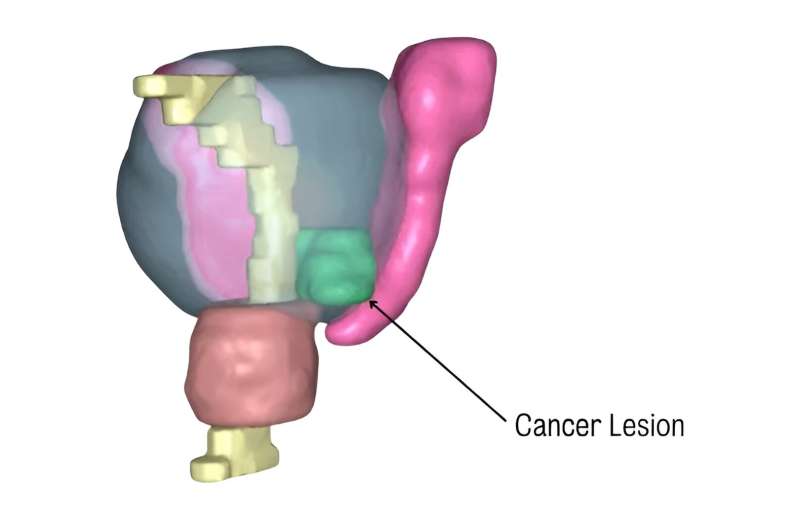This article has been reviewed according to Science X's editorial process and policies. Editors have highlighted the following attributes while ensuring the content's credibility:
fact-checked
trusted source
proofread
Using 3D modeling to improve the surgical outcomes for prostate cancer

Prostate cancer is often treated by a robotic keyhole surgery called a robotic-assisted radical prostatectomy. Accompanying this surgery is an MRI scan that tells the surgeon where the cancer is within the prostate.
Currently, surgeons are expected to mentally reconstruct a patient's 3D anatomy from the 2D imaging presented to them. This reconstruction becomes less challenging with experience, although it remains an issue in difficult cases and for junior surgeons.
Researchers from King's College London, Guy's and St Thomas' NHS Foundation Trust, Innersight Labs, Nvidia, and San Raffaele Hospital, have investigated current evidence and trends on the effects 3D models have in the reduction of complications resulting from surgery.
The results suggest that cancer lesion outcomes improve, but there is not enough evidence to conclude there is an improvement of functional outcomes such as urinary incontinence and erectile dysfunction. The findings are published in the Journal of Robotic Surgery.
"Our research has identified that the use of 3D-printed technology is most effective during a robotic radical prostatectomy. It allows surgeons to operate more precisely and successfully remove the prostate cancer while reducing damage to the sphincter muscle and nerve bundles. The operation is thus personalized to the individual patient while reducing the complications of surgery," says Professor Prokar Dasguptar OBE.
Alongside these findings, researchers are using artificial intelligence to map the prostate with the cancer on MRI scans, speeding up the creation of 3D models in future studies. The results are used to 3D print the prostate and create a 3D image on a computer screen for surgeons to refer to during the robotic procedure.
"We are currently running a feasibility study at Guy's Hospital that is allowing us to introduce state-of-the-art technology for the automated segmentation of prostate anatomy using artificial intelligence and the automated generation of 3D printed/virtual patient-specific models, while designing more sophisticated algorithms that could further reduce surgical complications," says Dr. Alejandro Granados, principal investigator and lecturer in surgical data science.
Future studies are expected to investigate the effects of 3D models on surgical outcomes across different levels of surgeons' experience.
More information: Kenaan Sarhan et al, Reduction of surgical complications via 3D models during robotic assisted radical prostatectomy: review of current evidence and meta-analysis, Journal of Robotic Surgery (2024). DOI: 10.1007/s11701-024-02041-2




















